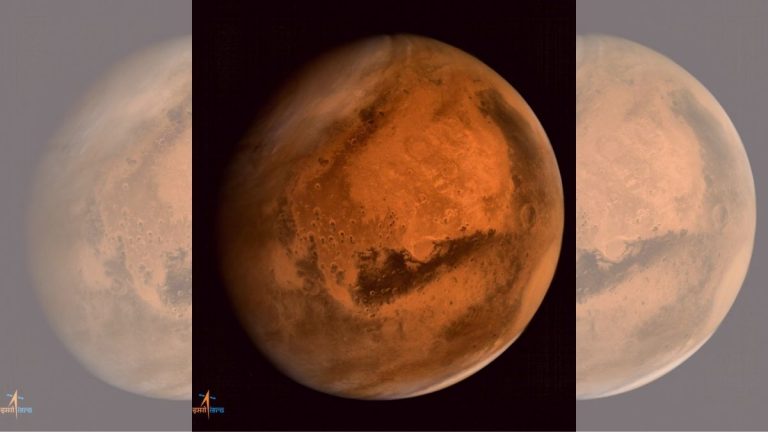
SOURCE: THE PRINT
Data from ISRO’s Mars Orbiter Mission shows that dust storms on the Red Planet causes its upper atmosphere to undergo warming and expansion, which in turn causes some of its gases to escape into outer space. Planets in the solar system constantly lose their atmospheres to outer space. The rate of this loss depends on the size of a planet and temperature of its upper atmosphere.
Since Mars is a relatively smaller planet compared to the Earth, it is losing its atmosphere at a faster rate. However, ISRO has now found how this loss is altered by the changes in the upper atmospheric temperature on Mars.
Characterising the Martian upper atmosphere is extremely important to understand this loss rate. This was one of the primary goals of the recent missions to Mars such as NASA’s Mars Atmosphere and Volatile Evolution (MAVEN) and ISRO’s Mars Orbiter Mission (MOM).
In the first week of June 2018, a dust storm started growing on Mars, engulfing the whole planet by the first week of July 2018. During this time, India’s Mars orbiter observed the evening side of Mars by diving down to altitudes as low as 155 km.
By analysing the data, scientists found that the upper atmosphere was undergoing warming and expansion as the dust storm slowly engulfed Mars over a month.
The team also inferred that the heating and expansion of global dust storm leads to a part of its atmosphere to quickly reach the exobase altitude at 220 km. Exobase is the outermost region of a planet’s atmosphere.
Any hot gases above the exobase altitude are more likely to move to further higher altitudes and subsequently escape to outer space. The study found that the 2018 global dust storm resulted in enhanced escape of the Martian atmosphere. More on ISRO.
Scientists decode effect of volcanic activity on Jupiter’s moon Io
The Atacama Large Millimeter/submillimeter Array (or ALMA) has for the first time documented the direct effect of volcanic activity on the atmosphere of Jupiter’s moon Io.
Io is the most volcanically active moon in our solar system, hosting over 400 active volcanoes. These volcanoes throw up sulphur gases that give Io its colours when they freeze out on its surface.
The images of Jupiter’s moon Io in radio waves (made with ALMA), and optical light (made with Voyager 1 and Galileo missions) for the first time show plumes of sulphur dioxide in yellow rising up from the volcanoes on Io.
To distinguish between the different processes that give rise to Io’s atmosphere, the team took snapshots of the moon when it passed in and out of Jupiter’s shadow.
Based on the snapshots, they calculated that active volcanoes directly produce 30-50 per cent of Io’s atmosphere.
When Io passes into Jupiter’s shadow, and is out of direct sunlight, it becomes too cold for sulphur dioxide gas, which condenses onto Io’s surface. During that time only volcanically-sourced sulphur dioxide is visible. This allows researchers to infer exactly how much of the atmosphere is impacted by volcanic activity.
The ALMA images also showed a third gas coming out of volcanoes: potassium chloride. More on CNN.






